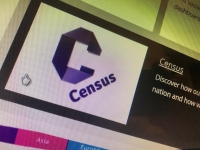More Than Recruitment: Strategic Partnership Latest

Since starting out 30+ years ago, I’ve come to see recruitment not just as a function, but as one of the most powerful levers for transformation. Time and again, I’ve witnessed how the right people, in the right roles, can shift an entire organisation’s trajectory. For me, it’s never been about filling vacancies. It’s about unlocking potential, building capability, and shaping leadership that drives lasting change.
I witnessed that at a very early stage of my career when resourcing teams to build the first digital mobile networks. We worked with a client who simply brought together the very best people they could from wherever they were in the world, into a country to make sure they got it right first time. If they didn’t, the penalties were painful, and we saw that plenty too, with other organisations who didn’t take quite the same approach to talent acquisition.
That belief has shaped a series of recent partnerships that reflect how recruitment is evolving and how it can deliver lasting, measurable value.
We have joined forces with a pioneering consultancy operating at the intersection of AI, blockchain and quantum computing. Together, we offer a full-spectrum transformation service, helping clients move beyond legacy systems and into future-ready environments. This goes well beyond executive search. We are co-delivering solutions that span strategic foresight, technical delivery and talent integration, bridging the gap between vision and implementation. Very few firms operate across this full lifecycle. We do. We think we need to.
In collaboration with a long-standing client preparing for a significant move into AI, we are challenging traditional hiring models. Conventional CVs and degrees are often poor predictors of success in this space. Our solution is a skills-first, aptitude-led model. By assessing for adaptability, potential and adjacent expertise, we are building teams that are not only AI-capable but future-resilient. For organisations aiming to stay ahead of rapid technological shifts, this mindset is essential.
An upcoming area of focus is helping clients tap into underutilised internal talent. In sectors undergoing major disruption, the aim will be to design retraining pathways in partnership with internal HR and L&D teams, mapping transferable skills and redeploying people into high-impact roles. This approach aims to do more than fill gaps. It will retain institutional knowledge, reduce recruitment costs and build a more agile, resilient workforce from within.
These collaborations signal a clear shift. Organisations are no longer just looking for recruitment support; they are looking for capability partners. Insight, strategy and adaptability are the new currency. At Malikshaw, we are leaning fully into this evolution. Whether you are building next-generation teams, navigating digital disruption or seeking a fresh external perspective, we are here to help you move from idea to impact.
If you are leading transformation and facing challenges around talent, capability or organisational agility, let’s talk. Here are four questions to consider:
Are legacy hiring models slowing down your transformation agenda?
Do you need to build capability in AI, blockchain or emerging tech?
Are you sitting on untapped talent that could be upskilled for the future?
Would your strategy benefit from a partner who sees recruitment through a transformation lens?
If the answer is yes to any of the above, we would love to hear from you.
Contact us at +44 (0) 870 042 1430
Explore more at https://www.malikshaw.com/
Change Champions: Leadership That Delivers.

Building a high-performing leadership team from scratch isn’t easy, but it’s absolutely worth the effort. Whether you’re starting from the ground up or thinking about developing talent from within, the journey takes careful planning, clear thinking and, above all, a people-first approach.
If you’restarting from scratch, putting together a strong leadership team usually takes anywhere from six months to a year. That includes finding the right people, getting them properly onboarded and giving them time to build trust, settle in and start delivering real results.
On the other hand, building a team from within can be a great option, especially if you already have some strong talent in place. Promoting from within often speeds things up, as those individuals already know the organisation and its culture. But it’s important to make sure they have the support, development and training they need to step confidently into leadership roles.
The right mix of skills is absolutely key. You want people who can think strategically, communicate clearly and understand the emotional side of leadership. Emotional intelligence might sound like a buzzword, but it makes a real difference, especially when leading through change. It helps create a team that can weather challenges, adapt and move the company forward together.
This is where working with a specialist recruitment partner can really make a difference. At Malikshaw Interim and Executive, we’re proud of our track record in finding and placing top-tier talent, including those hard-to-reach candidates who may not be actively looking but are the perfect fit. We know our industries inside out, and we’re deeply focused on finding individuals who not only tick all the boxes on paper but will genuinely fit and thrive in your culture. It’s not just about getting bums on seats,it’s about putting the right people in the right roles so your business can flourish.
The costs of getting it wrong can be huge. Poor leadership doesn’t just affect performance, it can hit morale, productivity and ultimately the bottom line. Sometimes, it takes a total refresh of the leadership team to get things back on track.
At the heart of all this is people. Change doesn’t happen in a vacuum. It’s people who drive transformation, people who inspire teams, and people who make the tough decisions. That’s why it’s so important to lead with empathy, create space for open communication and make sure your leaders are genuinely invested in the success of others. That’s how you create lasting impact.
When thinking about interims versus permanent staff, there’s no one-size-fits-all answer. Interims are fantastic when you need immediate impact or short-term expertise. They bring fresh perspectives and can hit the ground running. But permanent leaders give you long-term stability, cultural continuity and help shape the organisation’s future. In reality, a mix of both can be the best way forward, especially during periods of transformation.
A good example is a recent project we supported with a tech company going through a major digital transformation. They needed both permanent hires for long-term leadership and interims to bring in new thinking and specific expertise. By carefully selecting individuals who brought the right skills and shared the company’s values, we helped them build a team that drove real innovation and improved efficiency. It’s always rewarding to see that kind of impact.
Building a strong leadership team isn’t a one-off task. It’s an ongoing process that takes time, thought and care. It means getting to know your team, setting clear expectations, encouraging collaboration, investing in development and celebrating the wins along the way. When leaders lead by example and genuinely care about their people, that’s when the magic happens.
What’s worked for you in building your leadership team? Sometimes a fresh perspective or just someone to listen can make all the difference. We’d love to hear your thoughts.
Data Driven Decisions: People-Based Transformation

Data is playing a bigger role than ever in how organisations think about people. Hiring decisions, team structures, and workforce planning are increasingly being shaped by the insights we can draw from the information we already hold. Whether it’s measuring the impact of leadership styles, identifying gaps in capability, or improving retention, the shift towards data informed decision making is picking up pace. But for many organisations, the move from intuition to evidence isn’t always easy.
Take a hypothetical example from a mid-sized tech company based in Manchester. They had noticed rising staff turnover in one of their core teams and couldn’t work out why. By analysing data from performance reviews, engagement surveys, learning platforms and project outcomes, they began to spot a pattern. The teams that stayed together and delivered the most consistent results weren’t necessarily the most technically brilliant, but they did show greater diversity in backgrounds and collaboration styles. This prompted a rethink in their hiring strategy. Instead of focusing on a narrow set of academic or technical credentials, they started looking at candidates with broader skills and different perspectives. They also used internal data to spot early signs of disengagement, which helped them retain people who might otherwise have left quietly.
Now consider a government department in central London trying to apply similar thinking. The leadership is keen to make recruitment more strategic, especially with a push towards regional hubs. But the data they need is scattered across different systems. Some HR data is held in spreadsheets, some in ageing databases, and some hasn’t been kept up to date at all. Even when the information exists, there’s limited internal capacity to make sense of it. Middle managers are often left to interpret reports they’re not confident using, and senior leadership still relies heavily on instinct and past experience. The will to change is there, but the tools, skills and organisational support aren’t. Progress is slow, and any successes are hard to replicate.
These examples reflect the real-world challenges that come with trying to make data central to hiring and team building. For one thing, data is often siloed or difficult to access. Systems don’t always connect, and cleaning up legacy data can be a huge task. Even when good data is available, organisations may lack the skills to turn it into something useful. There’s also the issue of leadership focus. If data informed decisions aren’t championed at the top, they rarely gain traction further down. And perhaps the hardest part of all is shifting the culture. Moving from a process-driven, transactional model of HR to something more strategic takes time, and without a shared belief in the value of data, people quickly revert to old habits.
That said, the benefits are clear. When organisations invest in making data part of their people strategy, it becomes easier to make fair, consistent and forward-looking decisions. Hiring becomes more inclusive. Teams become more resilient. Talent development becomes less reactive. And managers feel more confident knowing they’re supported by real evidence, not just gut feel.
Does any of this resonate with your experience? Are you facing similar barriers around access, skills or culture when it comes to using data to shape your teams? At Malikshaw Interim and Executive, we’ve been helping organisations across the UK navigate these challenges and unlock the potential of data driven transformation. We support leaders and HR teams to build capability, align systems, and bring their people with them on the journey. If you’re looking for a partner to help you move forward, we’d be happy to start a conversation.
The True Cost of Doing Nothing: The Legacy System Risk

If you’re a transformation or project manager, chances are you’ve already come face to face with the joys of legacy systems. They lurk behind critical processes, often undocumented, poorly understood, and frustratingly resistant to change. And while the brief might be all about moving forward — cloud, digital, agility — you know you can’t do that properly without dealing with what’s already there.
Here’s the challenge though: legacy systems are rarely just a technical issue. They’re wrapped up in people, processes, politics, and sometimes a fair bit of fear. So if you’re building a team to lead meaningful transformation, you need more than just strong delivery skills. You need the right mix of experience, perspective, and courage to take on what many quietly avoid.
A good starting point is asking yourself: do I have people who truly understand how these systems operate, both technically and operationally? That knowledge is often buried deep in one or two long-standing employees or spread thin across legacy contracts. Without that insight, you’re flying blind. Could you bring in someone who’s done this before in another organisation — someone who knows how to ask the right questions and map out what’s really going on under the hood?
Then there's the future-focused side. Do you have enough digital expertise to challenge old assumptions and spot opportunities? Someone who’s not afraid to say, “Why are we still doing it like this?” Equally, who’s acting as the bridge between the two worlds — someone who can translate legacy into future state, and bring the business along for the ride?
One of the biggest risks in legacy-heavy environments is letting the tech define the strategy, rather than the other way round. As a transformation lead, you’re in a unique position to flip that dynamic. But only if your team has the confidence and credibility to influence across departments, challenge the status quo, and navigate the inevitable resistance.
Another thing worth considering: who’s got the emotional intelligence to handle the people side of change? Legacy systems aren’t just systems — they represent years of investment, career-defining projects, and in many cases, the comfort zone of senior stakeholders. You’ll need someone in your team who can build trust, understand the sensitivities, and still keep things moving.
It’s easy to assume legacy systems are just a constraint you have to work around. But the right team can actually turn them into a source of insight — a way to understand where the organisation’s been, and what needs to shift to get it where it wants to go.
So, if you’re shaping your transformation team right now, ask yourself: do you have the right mix of legacy know-how, digital vision, and leadership resilience? And if not, what would it take to get there?
At Malikshaw, we work with transformation leaders across industries who are building exactly these kinds of teams. If you’re facing this challenge and want to compare notes — or need someone who’s been through it before — we’d love to hear from you.
What have you found most difficult about managing legacy systems in transformation? Who made the difference on your team?













